The Catechesis of Children's Birthday Parties
Holding birthday parties for your children is chock-full of life lessons
I blame Martha Stewart for destroying children’s birthday parties. And McDonald’s. And every other celebrity or influencer or company who complexified, commodified, and otherwise made intimidating the simple annual celebration of a child’s birthday. Because of this, too many people think birthday parties need to be expensive, ultra-social-media perfect, comparison-inducing exercises—with the end result that too many people never have them, particularly those with multiple children. “We do family-only parties,” some parents tell me. “We just give our child a chance to pick a family outing, like going to Kings Dominion,” say others. “They get a chance to pick out a toy on Amazon,” say others. The result seems to be that fewer and fewer children have birthday parties, or if they do, they seldom invite other children to share in them.
Obviously there’s room for disagreement here, but as I’ve raised ten children, as has my mother before me, I feel I need to point out the multitudinous good reasons for keeping up the celebration of children’s birthdays in a way that is reasonably low-key but still celebratory, to enable as many children as possible to have birthday parties for at least two decades or more.
It need not be expensive. It need not be complicated. But it certainly is important. Over the years of inviting children to my children’s birthday parties, I came to realize that many, many other families don’t do birthday parties. At least, they don’t do ones with guests. The birthdays are celebrated privately with the family, with cake and relatives, but there’s no child party. This is fine so far as family culture goes—but it’s a missed opportunity.
So during this month of April when our family has three child birthdays—one a week for a month!—I thought I’d do a post on the importance of birthday celebrations for children.
The Practicalities of What to Do
I model our family’s birthday parties according to the method my own mother used, so no ingenuity is claimed here! Our birthday parties have several elements that are always the same, so much that friends of our family probably have them memorized. First: invitations. I never mail these but we do make them and send them at least a week before —these days by text, formerly by email, and when the kids are older, they make a hand-drawn invitation which I color-copy—or snap a photo and send by text. They usually always say some variation on:
Please join us for Johnny’s 8th birthday! Presents are optional: homemade presents are always welcome. Parents are welcome to drop off or stay and hang out—siblings are welcome too!
All the above elements are included on purpose.
First: Timing. Our parties are always held from 1-4 PM on a convenient weekday or weekend. 1 to 4 means after lunch and before dinner, so there’s never the expectation or expense of providing an actual meal. Our homeschool co-op meets three days a week, and so parties are always held on an “off” day. When friend groups include children from regular schools, we hold weekend parties, and adult children gradually move the time to the evenings.
Second, the guest list including both parents and siblings makes it easier for many families to come. I like to let parents know that if they need a place to drop kids and leave, that works, or if their need is for a cup of coffee and a place to nurse a baby or stay with a fussy toddler, that also works! Usually having extra parents around is super-helpful: it means time for conversations and help with serving cake. And including siblings in the invitation does everything from making it possible for a family to attend to beefing out the guest list if other guests fail to materialize. I figure: I’m already having people over, so half a dozen more doesn’t make much difference, and if the weather cooperates, we can send everyone outside. And over the years, including the extra folks has usually been delightful, typically no more trouble, and only rarely has involved difficulty (ie: the year younger sisters ate more than their share of the piñata candy at a boys’ party).
Next: optional presents. I was kind of fanatically controlling as to how many and what kind of toys my children had, as I’ve explained before, and I was adamant that there should not be too many of them (remember, ten kids). Plus, having experienced financial stress myself, I didn’t want another mother to be overwhelmed at the thought of having to purchase a pricey toy for someone else’s child. (If you are a mom with a child who gets invited to a lot of parties, that’s a lot of money! Especially if you have more than three children!) But banning presents altogether seemed unfair, because my children usually love to give and receive presents. So homemade presents has been a wonderful compromise with delightful effects, chiefly:
My children’s expectations for presents has been kept low. Hence they’re not disappointed if they didn’t get the game/toy they wanted for their birthday. Generally speaking, the materialistic potential of the party is dialed down. (We have enough of that kind of dynamic at Christmas and Easter...)
They have gotten some amazing and creative presents! I’ve always been amazed at who among their friends turns out to have some talent for woodworking or crafting or jewelry-making or art. Especially when they are young, guests are proud of showing off what they’ve made, or else bashfully pleased by the praise.
The door is open for sensible and creative presents such as a re-gifted toy or accessory, or ephemeral gifts like cards or bouquets of flowers. The gifts become true expressions of friendship, not a competition.
Party Prep
When the party day arrives, we clean up the party area (having a reasonably clean house usually means that there is not a lot to do to make this happen). Children are usually highly motivated to clean and even decorate. Invariably there are dollar-store streamers kept for the purpose, which don’t take up much storage room the rest of the year. Again, I keep the expectations low: the decorations are as much as the child and/or sibling wants.
From age 3-12, our birthday parties are inevitably tea parties. I started doing this when I was a toddler mom, and it’s been a choice that holds up well, and works for everyone except maybe boys aged 8 and above (the age where boys only want other boys at their parties, at which time we switch to soda and chips). Tea means less sugar, since I was one of those moms who always tried to limit sugar and junk food (and I still do). I also didn’t always have money for huge bags of chips and gallons of soda or even charcuterie or appetizers for nicer options. So we settled on tea, and it has worked out splendidly because the genius of a tea party is in the ceremony more than the actual ingredients.
Having a tea party means the cost of food is about $30, sometimes a bit less, sometimes a bit more. It consists of:
Tea. Celestial Season Fruit Tea Sampler is the go-to choice. Kids tend to like this. $5 or under if you get it on sale. You can also use this tea to make an inexpensive iced tea for summer birthdays - stir in some sweetener and ice and serve!
Cucumber Sandwiches. Ingredients for these consist of a skinny baguette, cream cheese (or in a pinch, mayo), and a cucumber. Cut the cucumber (peeled or unpeeled) into thin slices and set them out on layers of paper towels to dry off. Cut the baguette into thin slices, spread each slice with cream cheese, and use cucumber slices to make into regular or open-faced sandwiches, depending on your ingredient availability. This is about $7, especially if you get a discounted day-old baguette (which usually works fine). Round crackers can also work, but they tend to crumble.
Scones with jam and cream. This scone recipe is very similar to mine and plus it has useful photos. Instead of making scones into huge triangles, I cut them with a small jar into 2”-3” rounds. When baked, these become short puffy columns. These are easily broken in two, even by small children, and are made into sandwiches with jam and whipped cream. We get the best jam we can afford, make the whipped cream from heavy whipping cream and serve it and the jam in small bowls with tiny spoons. During the party, I demonstrate to the children how to make and eat the scones: you put a dab of jam on one side and a dab of whipped cream on the other, and put the two sides together as a sandwich you can eat in one (or two) bites. I usually have the ingredients for scones on hand since they are so basic. So the typical cost is only about $5-7 for jam and a pint of heavy whipping cream.
Cake. I am fortunate to have bakers in the family, but I can bake cakes myself and try to arrange my life so this is not stressful. Obviously birthday cakes can (and should) be made the day before, but invariably we are making the cake the day of the party. The birthday child gets to pick what they want for cake: for many years, I used a “souped up” box cake, which is a cake mix to which you add butter and cream instead of the vegetable oil and milk called for on the box. Homemade icing is always better, and cream cheese mixed with a bit of sugar and a drop of food coloring is even better. It’s possible to get super-elaborate with cakes, and I’ve been fortunate to give birth to bakers who go to town when asked to make their own (or a sibling’s) cakes. When cake-making falls to me, I try to stay simple, and small. The important part is the celebratory serving with candles, and then usually the cake is divided among the guests and eaten. Since we serve tea treats beforehand, I feel no guilt at being able to offer only one slice of cake per guest, and usually our cakes are finished along with the party itself. Which makes investing in quality ingredients worthwhile. If I have to buy a box mix or chocolate, this can add another $5 onto the price of the party.
So that’s it for basic costs. Some children ask for more and if we are able to splurge, we’ll add things, especially for boys parties: hard-boiled eggs, strawberries or apple slices, baby carrots with dip, cheeses, pretzel sticks, goldfish or other fun crackers, or salami wrapped around cheese. As I said, the bakers and cooks in the family can get inspired and creative with their offerings. But we tend to expand in the direction of non-sugary foods over more candy and cookies — although we have definitely added lemon curd to the scones, or added a dozen quality cookies to the mix, especially if it’s a larger party.
The Tea Party Part
OK, this part might sound intimidating but since we have done it so often, it gets less and less so as the years have gone by. For a children’s tea party, you need small inexpensive and expendable tea cups. As per Montessori, I give children real materials to work with like glass and china, so no paper or Styrofoam cups here. Instead, I collect espresso cups from IKEA and dollar stores and thrift stores year round so that when parties come up, I have a stack in the china cabinet to pull from. Plates are easy: we use the stacks of saucers that are always left over when the tea cups break.
(FYI when it’s super hot outside, we make herbal ice tea and serve it in small Oui cups instead of tea cups. This is where ice cube shapes can be fun.)
Tea parties with the above ingredients need no silverware: herbal tea requires no cream (which curdles in berry tea) so no spoons. And we never serve sugar, because it’s one more complication to put it out, plus children tend to be fascinated by the process and want to keep adding and stirring, ending up over-sweetening their tea. Plus, as I explain to children, when you eat sweet things, you want your drink to not be sweet so you can taste both the tea and the sweet thing. Scones and cucumber sandwiches are finger food, so no forks. The small serving spoons and knives for jam and cream are used by all and never put in the mouth.
So small cups, saucers, and paper cocktail napkins set out on a tablecloth spread over a table (or coffee table or picnic table) make things splendid. Over the years, I’ve collected a few pieces for fun and drama: a pillar for the cake, tiered trays for scones and sandwiches, but dinner plates still work in a pinch. The enjoyment is that everything is so small scaled that children find it exciting and older girls find it charming. (My older girls keep on having tea parties, although my older boys switch to the more standard chips and appetizers as their appetites grow.)
Bonus: tea parties mesh well with most girl themes: fairies, princesses, etc. We have had all sorts, even the sweet sixteen pirate birthday.
Sample Party Schedule
Here’s roughly how it goes down:
1 PM - 1:30 Guests arrive. If the guests have big appetites, (ie: older boys), bowls of snacks are set out on the table. Not a lot, just enough to take the edge off the appetite. Also water & cups are available to avoid children having to ask for a drink.
1:30-2:30 Free play time. I seldom bother with planned games, and there are definitely no screens involved. If kids want to put together an activity—a treasure hunt, a piñata—they are welcome to do so—but I usually just set up the tea party, work the food table and chat with the other moms during this time. I boil water and fill a tea kettle or two, and get the tea party food set out. Sometimes older children want to do this part themselves, and of course I let them. It’s a great for awkward tweens and teens to bond over making cucumber sandwiches, icing a cake, or setting a tea table.
2:30-3 PM Tea party commences. Might be a half hour earlier if activities demand it. We call everyone inside, have them sit down with the birthday child at the head of the table, and pray grace together, asking for a blessing for the birthday child. For younger children, I serve the tea and go around with refills to avoid spills, and remove all emptied dishes as needed. Child reaction to the tea and tea party food ranges from fascination to dubious: some are “not sure they will like it” the first time, but I always encourage them, and unless there are food allergies, never give substitutes. Countless children have discovered that they actually like tea (unsugared!) and cucumber sandwiches at our parties. And it’s honestly hard to go wrong with scones. (And I’ve finagled gluten-free options as well.) After children are full, they can run off to play and we partially clear/clean up the the table and put out a stack of small paper plates and forks or clean saucers for serving cake. Invariably we are boiling more water to make another pot tea, since generally once children get accustomed to it, they want more tea!
3:30 Birthday cake & presents! Regather the children and sing happy birthday. Candles are blown out (sometimes involving a group effort) and we cheer and sing our set of Polish birthday songs. Then the cake is sliced and served to all present, including adults and siblings. As I said, and it’s a testament to my baking children, there’s usually not any cake left. Guests are dismissed from the table to go open birthday presents, usually at a different place so the adults can clear the table — but if time is short and guests are lingering over tea and cake, we do it at the table. It’s usually a handful of gifts. Each gift is handed over, the card is read, then the gift is opened and admired and the recipient personally thanked. After all the gifts are opened, the birthday child thanks everyone for coming and then some additional playing, usually involving the presents, happens until the time of departure comes.
FYI if there’s a piñata/treasure hunt, we move the whole eating timeline forward a half hour so after presents, the fun begins. Our treasures are usually a chest of candy (one year a grandfather delighted everyone by throwing in a handful of states quarters and golden dollars into the mix), so when the treasure is found/piñata broken, the candy can be evenly divided into treat bags (ie: usually sandwich bags) and guests are sent home with the candy. (Much easier and the parents can figure out the sugar part.)
The things that are sold to augment children’s birthday parties—including those by Martha Stewart & Co.—I usually never include: no favors, hats, themed paper goods, etc. If such items come my way, or a child requests them, well and good, but I usually encourage my children to make their own rather than buy. It fosters independence and lowers the financial bar, which turns out to be important. When they are grown, I don’t want my children to hold back from hosting birthday parties for their own families because they think they can’t afford the accessories. I also generally eschew any “event” parties—McDonalds, roller rinks, etc.—for the same reason. (Although our teens have done hiking and picnic parties, which cost nothing but the picnic!)
What you learn: How to Host
I called this article a “catechesis,” because learning how to host a birthday party is deeply catechetical. What would the parable of the prodigal son have been without the father holding a party at the end? Celebration is part of our faith, and so is hospitality. It’s crucial that our children know their catechism and the Mass, but celebration is very much a part of liturgical life. The Eastern churches recognize this by having their Eucharist flow right into the ceremony of the Agape meal (the Western church equivocate with coffee and donuts). How much more poor the church would be without the incarnational aspects of shared food and drink and good cheer? Where do our children learn this? Through hosting their own birthday parties.
This came home to us this Easter when my adult daughter and her friends put together a party for the parish in honor of the catechumens after Easter Vigil Mass. As she went around asking her friends for help, so many of them admitted they had no or little idea how to even begin to create a party. My daughter realized she knew the basics of how to plan such an event—which ended up involving a few hundred Easter-joy-filled parishioners—because she had been hosting her own birthday parties since childhood. The only thing different was the timing and the scale. Afterwards, so many people came up and thanked her and her team for doing this, saying they had wished for years for such a celebration but didn’t know how.
So teaching your children how to throw a party is actually part of liturgical living, re-enacting the parables, incarnating the lessons heard in church. Including the part where you invite everyone you can find to the party. The Church never limits her guest list, and we should try to model or emulate this for our children as much as is feasible.
Some children (and adults) are leery of inviting children they don’t know well, but I have always encouraged my children to make their parties as open invitation as is reasonable. This is because it most mirrors the celebrations of the Kingdom of Heaven: all are invited, but not all will respond. And often extending an invitation to a party to someone new or unknown is the beginning of a real friendship. Invariably we seldom have “too many people” at a party: and more often than not, we have the opposite problem of too few responses.
Managing large parties of children without adult help was tricky when I was young, but once I had older children, I let them know that they were expected to co-host along with me, and most of them have always done so. So now I feel more free to remind my children to invite the new child in class, the quiet ones in the group, and I seldom worry about overcrowding, especially when the weather is pleasant outdoors.
When children host their own parties, they learn how to treat a guest: with a particular and individual welcome. They have to put into practice (usually with parental modeling and help) how to introduce guests to one another, how to show them the food and invite them to eat or how to get them a drink. Since I don’t plan the games for them, they have to figure out how to involve everyone in the playtime, how to check up on children who don’t seem involved, how to meditate quarrels and come up with solutions, and all of the tricky and delicate social interactions that are best learned nowhere else.
For this reason, we parents are always present for our children’s parties, particularly teen parties. Even when my own teenagers are running their own party from beginning to end, I—and my husband if he’s around—try to keep a parental presence known—I chat with guests in a friendly way, show them around, and as I said, I and my other children work the party as servers and cleanup, doing the unpleasant parts so my teens can focus on being present to their guests. This tends to minimize quarrels and disruption.
Before the party, children learn how to make an invitation list, how to decide who to invite, whether they want to invite everyone in their class or team or activity group, or limit it to a few people. They also decide when to include both boys and girls, when to stop inviting both, and when to start having co-ed parties again (generally around age 16 seems a reasonable time).
They also learn charitable discretion: how to extend invitations and how to keep silent about a party around people who are not invited. This is because our family rule is that if you talk about your upcoming party in front of someone who you have not invited, you must invite them as well. So if you don’t want to invite them for a particular reason, you have to NOT talk about your party before or afterwards around others who are not invited. There’s enough FOMO in the world as it is.
All of this is basic ground rules charity towards our brothers and sisters in Christ. These are lessons best learned at a party.
What you learn: Your Child is a Gift
My parents had ten children, so my mother wanted to ensure no child felt “lost in the crowd.” For this reason, she made sure no child was relegated to merely having a “family party” because of course, the child has and will have a life outside of the family. The birthday party was a chance for that individual child to be celebrated for their own personal uniqueness, with their own friends and a party planned their own way.
But I’m not saying a family birthday party is a bad idea. In practice, most of our children always had two parties: a family party the day of their birthday and a friend birthday party at the next most convenient day. The family birthday involved the child getting to decide what the family would have for dinner (within reason), a birthday cake for desert, and visits from local relatives, maybe a present or two. Also, family birthdays always had a time for honoring: for each family member going around the table to say something to honor the birthday child: thanking them for a kindness or telling them something they admired about them. The gift of “encouraging words” is given at the family party, because it’s hard for us to be respectful and positive towards those we live with or think we know so well. Family encouragement in this manner can defuse quarrels, soothe wounded feelings, and make us pay attention to those we take for granted without sarcasm or irony. There needs to be moments of genuineness in family relationships, and honoring a person on their birthday amidst the family party gives a structure to this.
Yet we always try to give our children an “outward facing” party as well, to let them know that they are a gift and worth celebrating with other people beyond their family. This is yet another way we are parents can help them believe that they have a Heavenly Father Who loves them and takes care of them, One Who rejoices when His repentant children return. We don’t want our child to feel like the elder brother who felt he was never “even given a kid goat feast his friends.”
The other way that birthday parties catechize children is that they give children the confidence to celebrate themselves after they leave the house. Our single children always query: should I have a birthday party for myself or is that selfish? Our answer: absolutely, you should have one! When you’re an adult, celebrating your own birthday basically means giving your friends a party, because you are now footing the bill for the cake, the appetizers, and so on (usually you’re serving beer or cocktails instead of tea!). As with all things, getting married makes this easier, as spouses host parties for their spouse, following the same lessons learned in childhood regarding food, guest lists, and so on. We are called to love our neighbor as ourselves, so giving yourself a party is only what you would do for anyone else you loved: and it’s worthwhile to know how to do it.
One additional reason all our parties follow a simple basic pattern is because we want to replicate them easily. If a party for an individual child becomes too elaborate or unique, injustice or felt injustice is sure to occur. For instance, we want to avoid the family photo stream commemorating that child #1 had birthday parties at Checkers with fifty friends while child #7 only got a cupcake from the grocery store the day after. We wanted to ensure that later children got just as much attention as the former ones, and so we kept things simple for as long as we could. We also encouraged the children who wanted something more elaborate to actively channel that into making a party for their siblings. This was yet another way to show siblings how to learn about and love one another.
What you learn: All Life is a Gift
Learning how to party—whether with tea and cake or wine and cheese—is an art and a gift, one that is meant to be given to others. So many times my adult children have stumbled upon a friend or acquaintance whose life was never celebrated, a person who was never given a birthday party as a child. My children’s response was immediate: to organize a party for them, or at least have folks go out for drinks after work in their honor. When you are a Catholic, you have a commitment to Christ, and that means an emotional commitment as well. You commit yourself to not only be reverent in church or solemn on Good Friday but to being joyful on feast days. This means exercising energy towards joy: smiling, speaking cheerfully, singing, being appropriately silly, playing games, dancing, expressing joy. If you can do this for Christ, you can do this for Christ as met in other people. Teaching our children means giving them the tools of creating joy, and yes, sometimes this means parties.
Fewer things excite a child more than their birthday party: my littlest children would look forward to theirs nearly all year round. From this natural self-interest they can be led to be excited for other’s parties, and woven all throughout, the celebrations of the life of Christ. This is another reason why we avoid worldly secularization of our parties: we do what we can to avoid too much reliance on drinking, immodesty, watching questionable material, or even good humored “roasting” that might veer too easily into shaming. As you party with your children as they grow, the Christ-like element comes about naturally.
Part of Culture Recovery involves bringing Christ into every element of family life, for He is eternal and gives life to our feeble and exhausted efforts. Even having the will to do some of the above is enough for Him, and we have found He always steps in when life is sorrowful and happiness needs to be intentional. And the lessons of the birthday party extend far beyond the day into the rest of the year, and hopefully, will last a lifetime, if not eternity.
Happy hosting and celebrating!


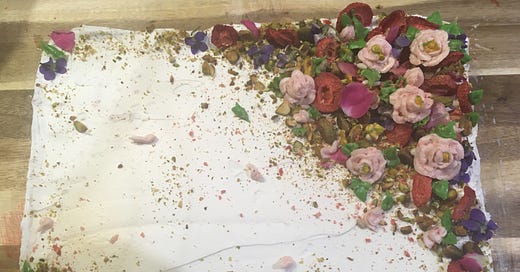



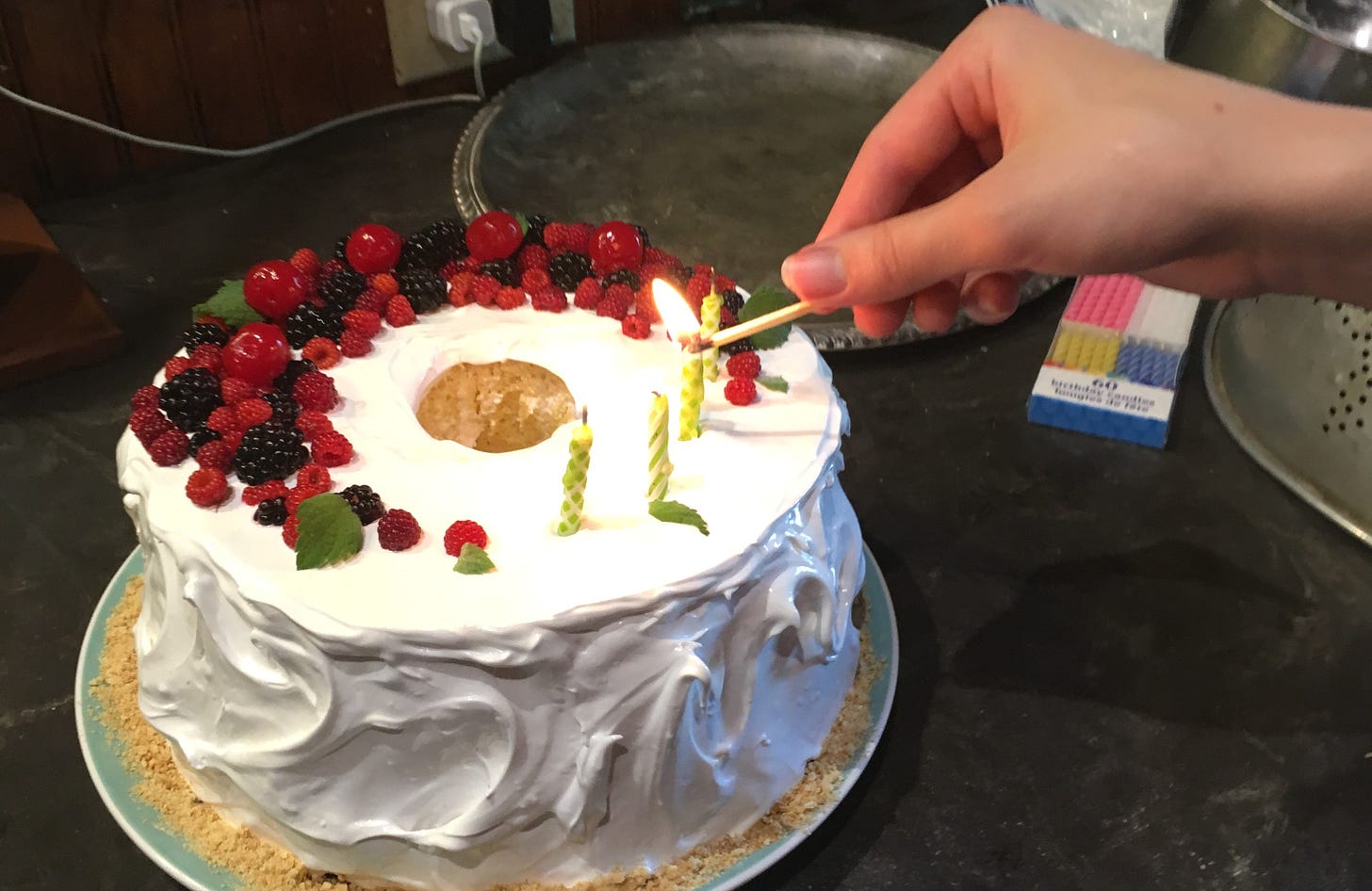

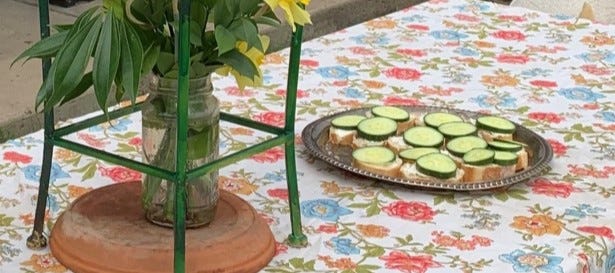
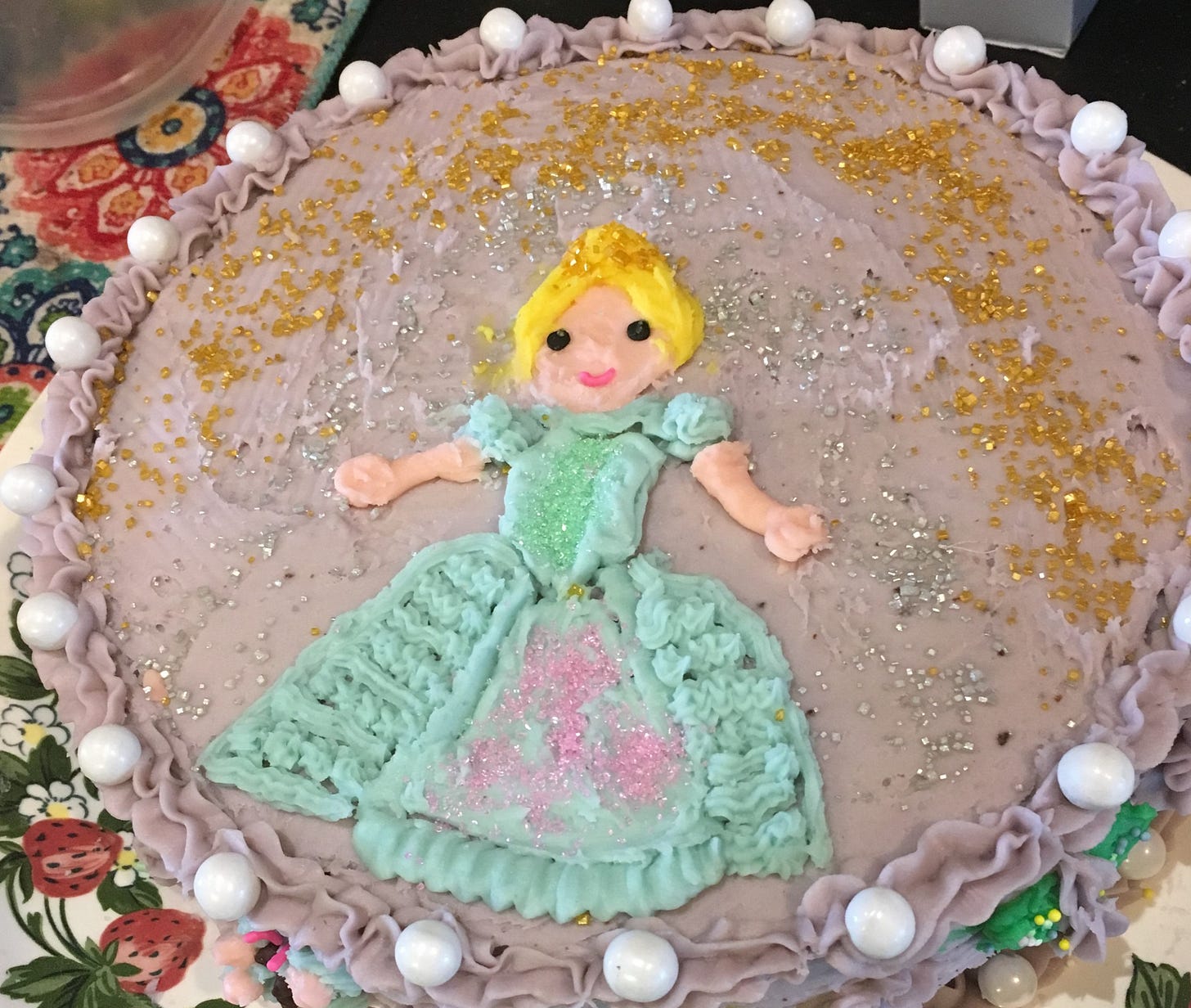
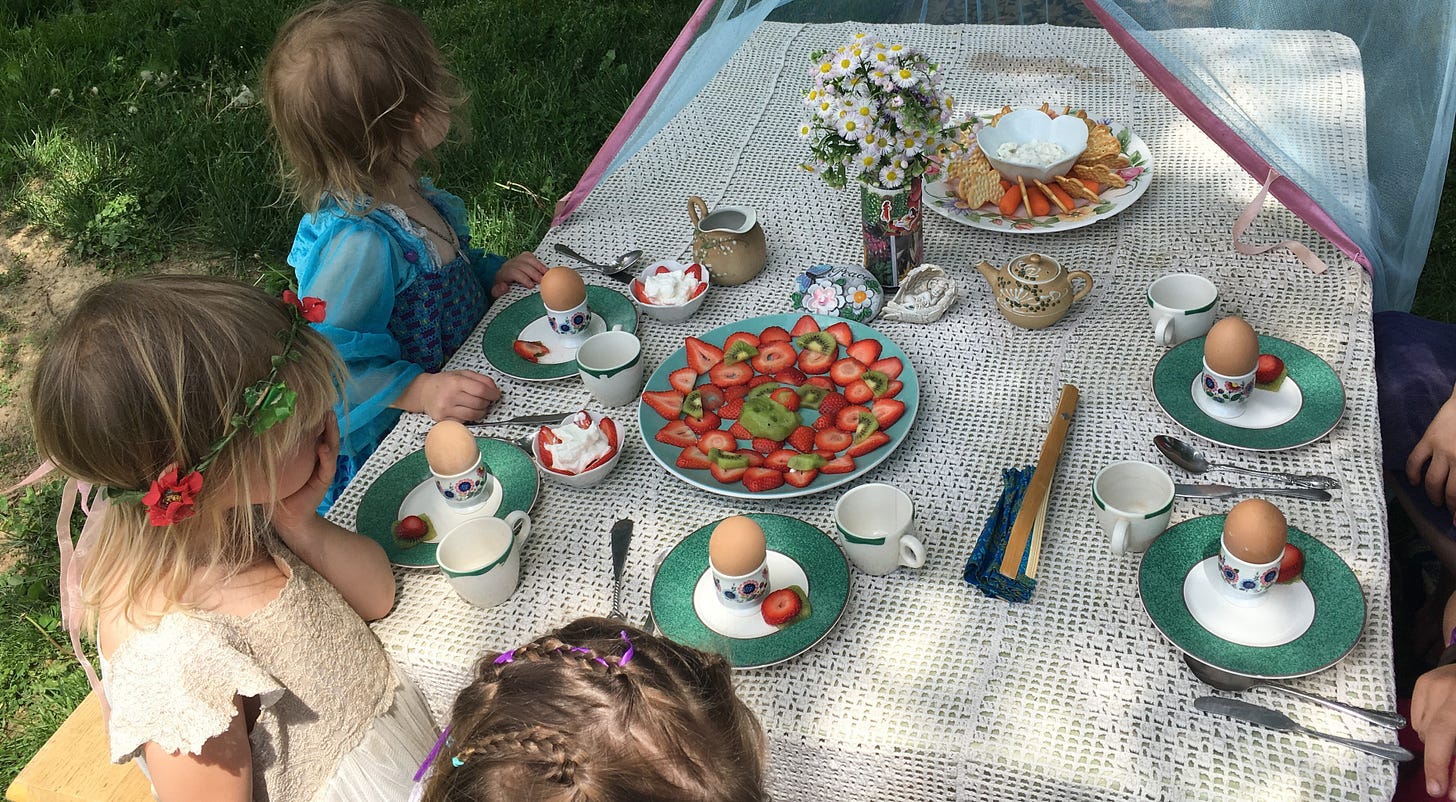
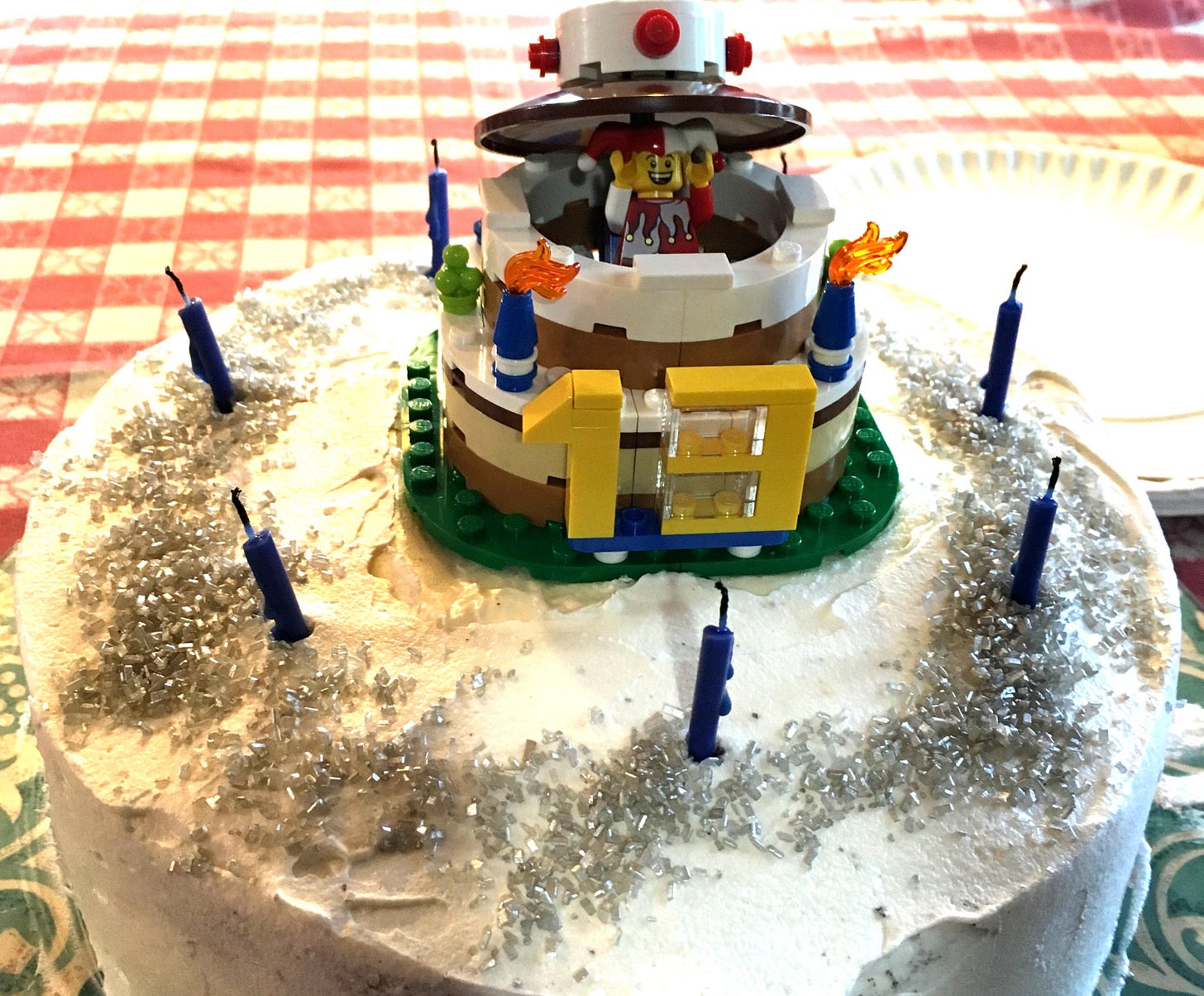
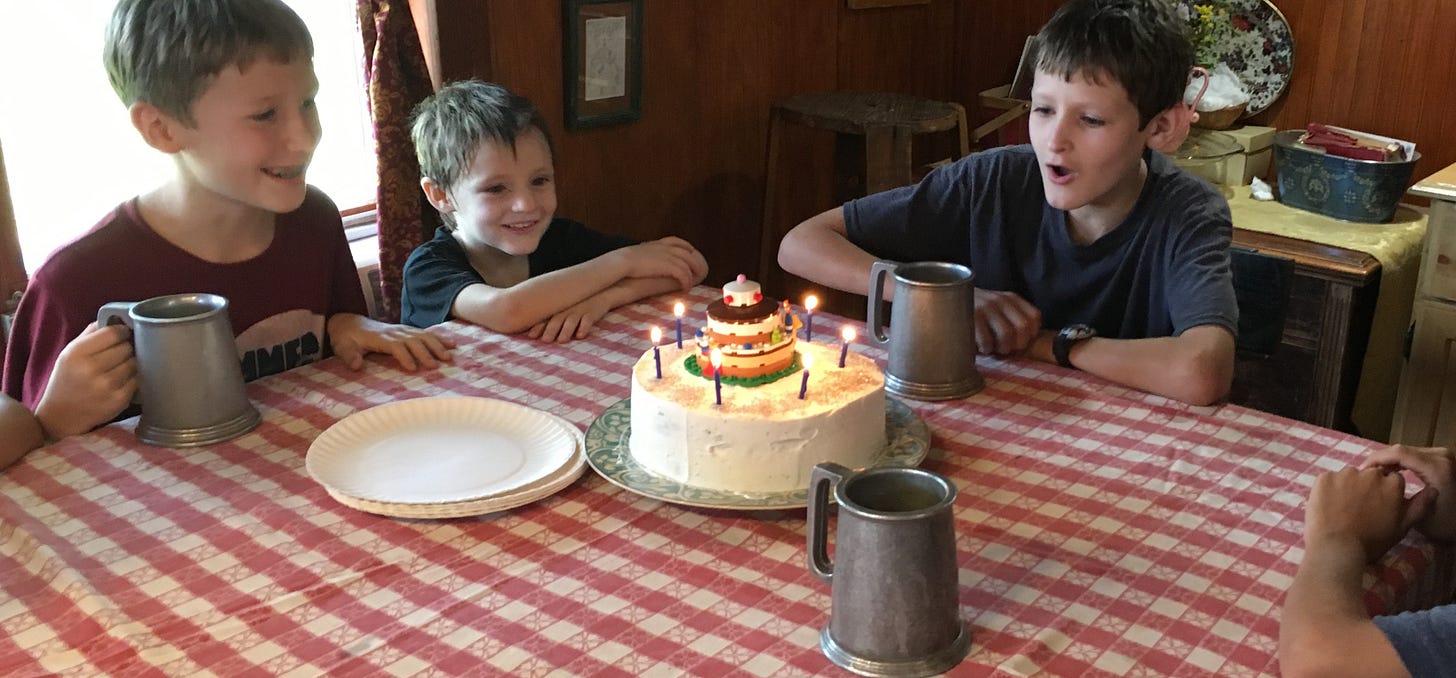

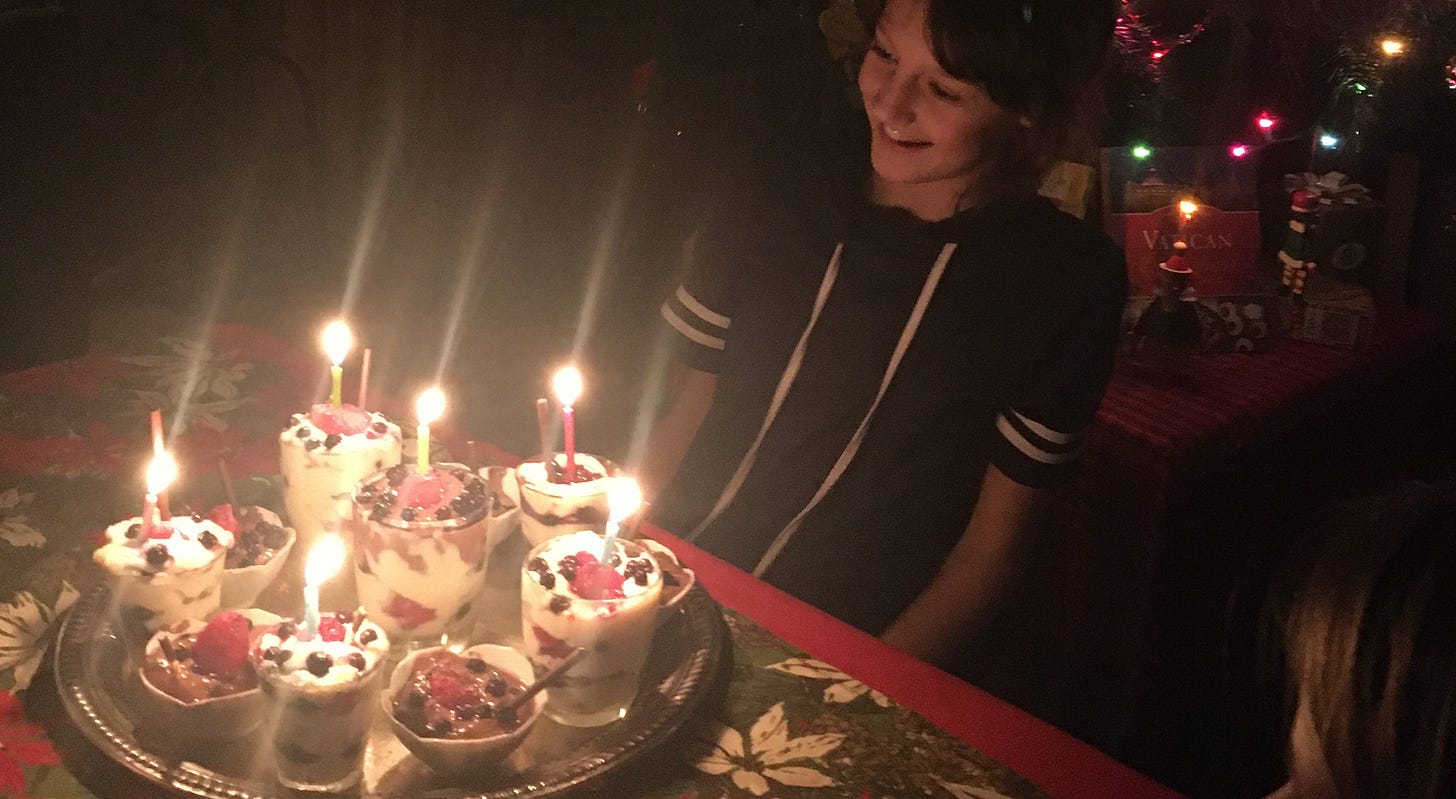

I have to give you credit for winning me over on this one! I have six kids, the three oldest are in school and I have become completely exhausted by birthday party culture. We constantly get invitations to elaborate parties and the result is that I groan at the idea of any child’s birthday party. I went into this article fully prepared to disagree with you and came out feeling much different about the whole process. I especially like the idea of homemade gifts mentioned on the invite because I and my children are enthusiastic gift-givers which can become an expensive personality trait. 🥳
I love all of this! And thinking in terms of catechesis for hosting parties. We're growing the kingdom and learning to celebrate life together!
While not birthday parties specifically, my husband and I have hosted an open invite Friday dinner most weeks for eight years. It's grown from two or three friends dropping by after work and before Bible Study to solidly twenty or more people every time and someone new every week! We encourage our friends to bring friends and new people they meet. We do try to have cake at Friday dinner when it's someone's birthday (tonight's cake will have five names on it 😅). I mostly make simple things, like rice and beans, which are cheap and scale well. My house is small and messy and lived-in by kids and the walls are covered in stickers. We're not "entertaining", we're just having people over.
Our dinner tradition has been going on since before my daughter was born. I practice "attack friendship" and try to trade contact info and give an invite to Friday dinner to everyone I meet (families at the library, people walking dogs, new faces at church, etc, and sometimes they come!); we moved to a new state on our wedding day and know what it was like to have no friends for a long time. This is now such a natural part of my daughter's life, that she was chatting with the checkout clerk while grocery shopping with Dad, and she found out he was Catholic and invited him to dinner. And he came! And he brought his girlfriend who was looking for a Biblical Greek class, and some of my friends, who were sitting near her at dinner, host Greek class every week!
People have found jobs, housemates, friends, community, and three couples have met at our dinners and gotten married and several people have converted and found Catholic community. Some people have moved to live in the same neighborhood and raise our children together. It's all the Holy Spirit, all I do is cook and invite! It's been a blessed life full of more friends that I could have imagined. We can share celebration and sorrow together, and in these friendships, see a foretaste of heaven!